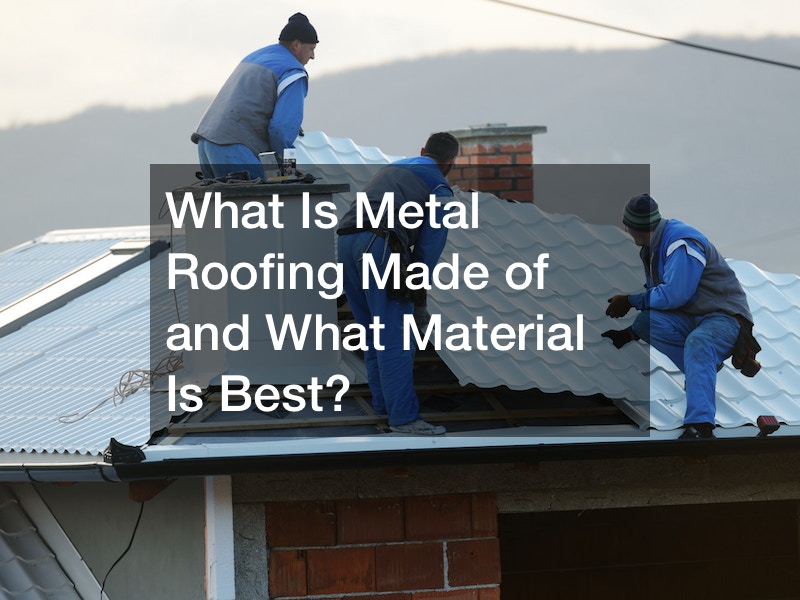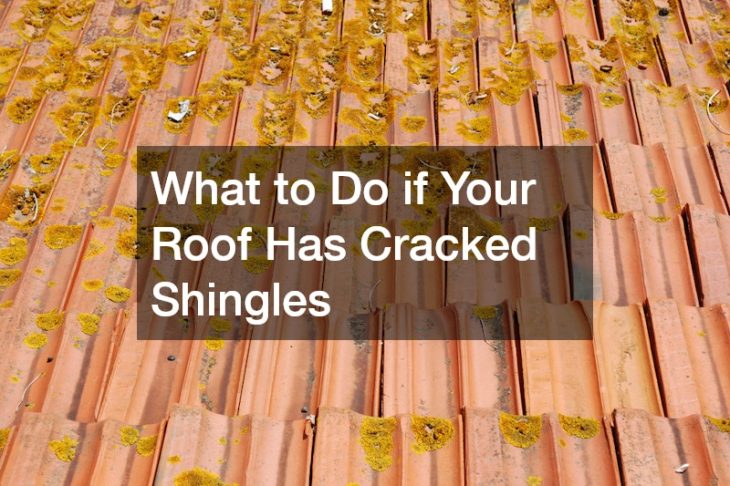
What Is Metal Roofing Made of and What Material Is Best?
When it comes to maintaining a home, the roof often takes precedence due to its crucial role in protection and insulation. Exploring roof repair options in your area is essential when one encounters issues that could compromise the structure. For instance, learning how you can fix garage roof issues can range from DIY solutions for minor problems to seeking professional help for more extensive damage.

One of the first steps to take is to obtain free roof repair quotes from your local roofing company. These quotes can provide a clear picture of the costs involved and help in making informed decisions regarding the repairs. Many companies offer these no-obligation quotes, allowing homeowners to compare services and prices. The garage, in particular, is an area where issues can often be overlooked until they escalate. Finding your go-to option for garage roof repairs involves researching and selecting a trusted local contractor with expertise in this specific type of repair work.

It’s often advised to repair garage roof issues before they get out of hand. Timely intervention can prevent minor problems from turning into significant damage, thus saving time and money in the long run. Regular roof inspections and maintenance are key in identifying potential issues early and ensuring the overall longevity of the roof.
Have you ever wondered, “What is metal roofing made of?” you’re not alone. Metal roofs are becoming increasingly popular due to their durability, lifespan, and aesthetic appeal. But what exactly are metal roofs made of? In this guide, we’ll explore the different types of metals used in making metal roofs. From common options like steel and aluminum to more specialized options like bronze and titanium, understanding the materials behind metal roofing can help you make an informed decision when it comes to roofing your home.
Steel

Steel is a prominent material used in the building of metal roofing when it comes to what is metal roofing made of. Steel roofs come in a variety of styles to meet a variety of demands. Galvanized steel, which is zinc-coated, provides good corrosion resistance, whereas galvalume steel combines zinc and aluminum for increased durability and heat reflectivity. These alternatives provide metal roof design flexibility, assuring suitable for a wide range of commercial roof inspection requirements.
Stainless steel is another option for steel roofs. It’s a corrosion-resistant alloy composed of iron, chromium, and other elements, making it highly durable and suitable for various applications. Waterproofing companies prefer stainless steel due to its exceptional resistance to rust and degradation in moist environments. Its non-porous surface and ability to maintain structural integrity even when exposed to water, chemicals, and harsh weather conditions make it an ideal choice for any waterproofing company for applications in drainage systems, gutters, and waterproof coatings.
Steel roofs have many strengths over other metals and roofing materials. One notable benefit is their excellent resilience, which allows them to survive extreme weather conditions without warping or splitting. Steel roofs are also fire-resistant, which provides additional safety for commercial properties. Also, steel roofs have a longer lifespan than typical materials like asphalt shingles, making them a dependable and cost-effective option in the long term.
The process of manufacturing a metal roof from steel involves several steps. Specialized machinery shapes the steel into panels or shingles, which are then coated with protective layers such as galvanized or galvalume coating for corrosion resistance. Additional finishes can be applied to enhance the aesthetic appeal and provide further protection. Once the steel panels are ready, they can be installed on the roof, creating a durable barrier against the elements and ensuring a reliable commercial roof inspection outcome.
Aluminum
Aluminum is a commonly used metal roofing material that has various benefits that make it a popular choice among roofing contractors for both residential and commercial applications. Because aluminum is a lightweight and pliable metal, it’s simple to deal with throughout the production and installation procedures. Its corrosion-resistant features make it suited for a variety of climates and settings, assuring the roof’s lifespan. When it comes to the concern, “What is metal roofing made of?” aluminum stands as a reliable and versatile option.
Compared to other metals and roofing materials, aluminum roofs offer significant strengths. One of the key advantages is their lightweight nature, which puts less stress on the building’s structure. This is especially beneficial for retrofitting projects or structures that require additional weight considerations. Moreover, aluminum roofs have exceptional corrosion resistance, particularly in coastal or humid environments, making them extremely durable over time. Aluminum roofs stand out for their high reflectivity, which reduces heat absorption and potentially lowers building cooling costs.
While aluminum roofs offer many advantages, they also have certain disadvantages to consider. One significant disadvantage is their greater initial cost in comparison to other roofing materials. However, it is crucial to note that the extended lifespan and minimal maintenance requirements of aluminum roofs can balance the original cost over time. Another factor to consider is aluminum’s softness in comparison to other metals such as steel. This means that aluminum roofs may be more prone to denting under adverse weather conditions or when subjected to large loads.
Copper

Copper is a unique and distinguished material that has been used for centuries in various applications, including metal roofing. If you’ve been wondering “What is metal roofing made of?” copper stands out for its exceptional qualities. Copper possesses a distinctive reddish-brown color that develops a beautiful patina over time, giving roofs a timeless and elegant appearance. Additionally, copper is highly durable, corrosion-resistant, and has a long lifespan, making it a sought-after choice for a roofing service.
Copper roofs offer a multitude of benefits that make them stand out among other roofing materials. One of the primary advantages is their longevity. Copper roofs can last for well over a century, providing a durable and reliable solution for residential and commercial buildings. They require minimal maintenance and are resistant to cracking, warping, and rusting. Moreover, copper is a lightweight material, which places less stress on the structure and allows for easier installation.
Significant statistics emphasize the advantages of copper roofing. Copper, for example, is one of the most recyclable and ecologically beneficial roofing materials available, with a recycling rate of more than 95%. As a result, copper roofs are a viable option for individuals seeking to reduce their environmental effects. Besides, copper roofs are extremely energy efficient, reflecting a substantial amount of solar heat and lowering building cooling expenses. The natural patina that develops over time helps the thermal performance of the roof and can improve its overall insulation capabilities.
Zinc
Next on our series, “What is metal roofing made of” is zinc. Zinc is a versatile metal that finds application in various areas, including metal roofing. When exploring what metal roofing is made of, zinc emerges as a prominent material choice. Zinc is primarily found in the Earth’s crust and is commonly extracted from zinc ores such as sphalerite. Its abundance and accessibility make it a viable option for roofing businesses looking for a durable and reliable roofing material.
As compared to other metals such as steel, aluminum, and copper, one of zinc’s main advantages is its outstanding corrosion resistance. Zinc roofs have a natural capacity to create a protective covering known as patina over time, which works as a corrosion barrier. This distinguishing feature enables zinc roofs to have a longer lifespan and better withstand the weather, making them extremely durable in a variety of climates and settings.
There have been major advancements and trends in zinc roofing in recent years. One noteworthy trend is the growing demand for ecologically friendly and sustainable building approaches. Many zinc roofs are manufactured using reclaimed zinc, which is a highly recyclable material. This makes zinc roofing a popular choice for those seeking eco-conscious options in the construction industry. There’s also a growing appreciation for the aesthetic appeal of zinc roofs. The sleek, modern look of zinc complements a wide range of architectural styles, making it a favored choice for both residential and commercial roofing projects.
Tin

What is metal roofing made of? Tin was one of the first materials used in metal roofing, which dates back thousands of years. Tin roofs have been popular since the 18th century, especially in Europe and North America. Tin was chosen because of its availability, simplicity of mining, and malleability. Its durability and capacity to endure extreme weather conditions made it a viable alternative for sheltering structures from the elements. Although tin roofing has declined in popularity in recent years, it still has a distinct position in metal roofing history.
Unlike other typical roofing metals such as steel, zinc, and aluminum, tin has distinct advantages. Tin roofs have excellent corrosion resistance, even in highly corrosive environments, making them highly durable and long-lasting. Tin also has a low melting point, which allows for easy installation and repairs. Additionally, tin roofs offer superior flexibility and malleability, making them ideal for complex architectural designs and curved roof installations. While steel, zinc, and aluminum have their own merits, tin roofs stand out with their corrosion resistance, ease of installation, and design versatility.
When contemplating tin roofing, it’s important to be aware of and follow rules and laws to guarantee a successful new roof installation. Metal roofing regulations often include suitable installation practices, such as proper fastening methods and enough ventilation to minimize moisture accumulation. It’s essential to study local construction laws and regulations since they may specify special criteria for tin roofs in your location. Regular inspections and maintenance, such as cleaning debris and inspecting for signs of corrosion or damage, are also required to maximize the lifespan and performance of tin roofs. By adhering to these requirements and laws, homeowners may reap the benefits of a dependable and long-lasting tin roof.
Titanium
Titanium is a remarkable material for metal roofs due to its exceptional properties. What is metal roofing made of? Metal roofing is typically made from a variety of materials, including titanium Titanium roofs offer unparalleled strength and durability, capable of withstanding extreme weather conditions, such as heavy rain, wind, and hail. They are highly resistant to corrosion, ensuring long-term protection for residential buildings. Additionally, titanium roofs have a sleek and modern appearance, adding an aesthetic appeal to any home. With its lightweight nature and ease of installation, titanium roofing provides a practical and attractive solution for residential roof replacement projects.
Titanium roofs offer superior strength and durability compared to other metals such as steel, zinc, tin, lead, aluminum, and other roofing materials including shingles and tiles. They are incredibly resistant to rust and corrosion, making them an excellent long-term investment. Titanium roofs are also lightweight, reducing the structural load on the building. Additionally, they have excellent thermal properties, reflecting sunlight and reducing cooling costs. In terms of longevity, titanium roofs can outlast many other roofing materials, ensuring peace of mind for homeowners.
Now that you have Titanium for the question “What is metal roofing made of?” The next thing is to find the finest residential roofers for your home roof installation or replacement project. Seek skilled roofers who specialize in metal roofing installations, especially titanium roofs. Look for roofers that have a solid track record and great client feedback. It’s vital to conduct extensive research and obtain quotations from various contractors in order to evaluate their experience, price, and schedules. Be certain that the roofers you hire have the required licenses, insurance, and qualifications to perform titanium roofing installations.
Lead

Lead is a versatile metal that offers several benefits as a roofing material. Lead roofs are known for their exceptional durability and longevity, with a lifespan that can exceed a century with proper maintenance. They are also malleable, allowing for intricate and customized designs, making them suitable for various architectural styles. What’s more, lead is an eco-friendly choice as it can be recycled and has a low carbon footprint, contributing to sustainable building practices. So, what is metal roofing made of? Metal roofing is typically made from a variety of materials, including lead.
The cost of metal roofing with lead varies based on a number of factors. Lead roofs often need specialized installation and professional craftsmanship, which can increase the entire cost. Also, the price of lead may change owing to market conditions. While lead roofs may have a greater initial cost than other roofing materials, they provide long-term value and durability. The durability of lead roofs decreases the need for regular repairs or replacements, potentially saving money over time. To acquire accurate cost estimates and understand the individual elements that may affect the pricing of a metal roofing job with lead, speak with a commercial roofing consultant.
To help manage the upfront expenses involved with metal roofing installations, several financing solutions, including loans or leasing programs, may be offered. Furthermore, some government incentive programs or subsidies may be available to encourage environmentally clean and sustainable roofing projects, particularly those involving lead roofs. It is critical to investigate and investigate different financing choices in order to find the greatest fit for your personal demands and budget. Consulting with a commercial roofing specialist for the most up-to-date information on metal roofing financing options.
Metal roofing offers a durable and reliable solution for residential and commercial buildings. What is metal roofing made of? Metal roofing encompasses a range of materials such as steel, zinc, tin, titanium, lead, and aluminum, each with its unique characteristics and benefits. Whether you prioritize energy efficiency, corrosion resistance, or aesthetic appeal, there’s a metal roofing material to suit your needs. Be sure to consult with roofing specialists and explore financing options to help make your metal roofing project a successful investment in the long-term protection and beauty of your property.

